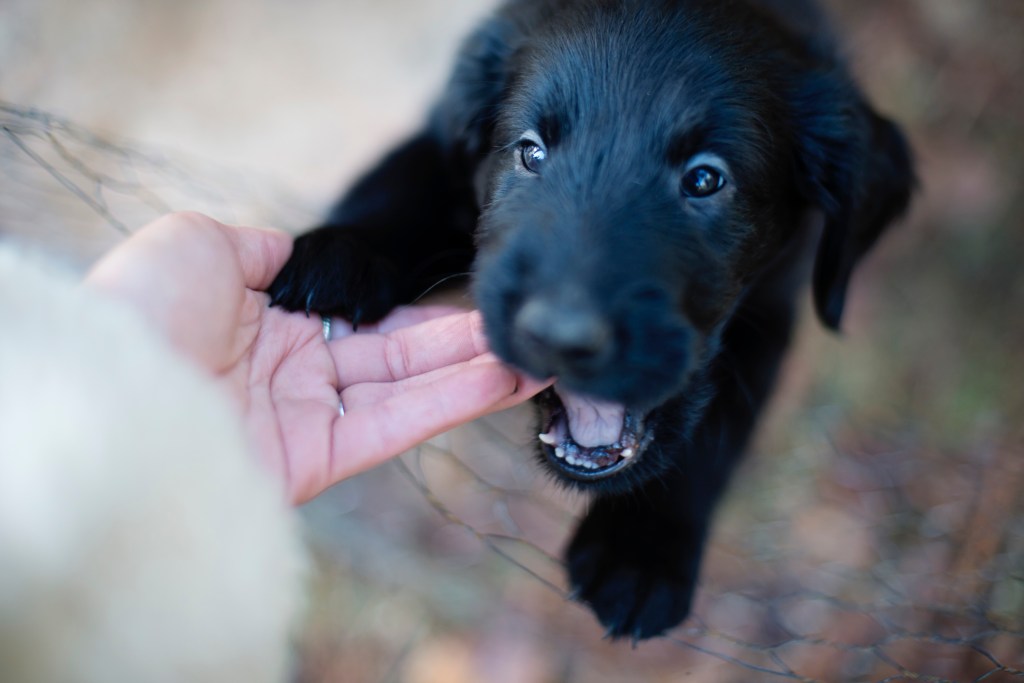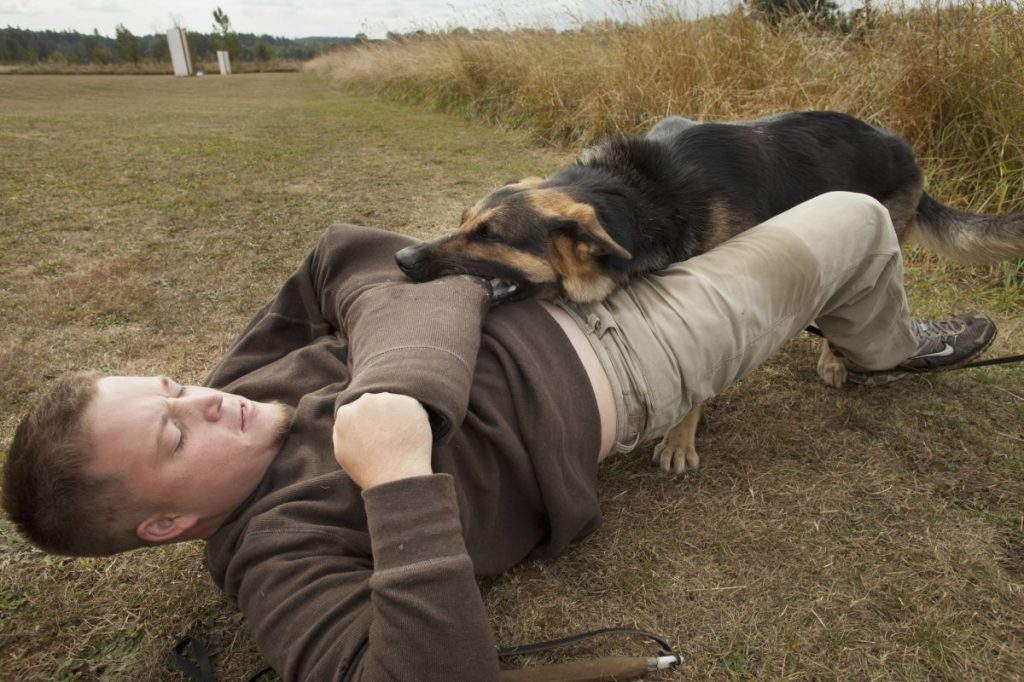It’s no secret that the successful co-existence between dogs and humans traces back to thousands of years ago.
While there’s no denying this dog-human connection still runs deep, concerns about whether man’s best friend is slowly becoming his “enemy” remain high. The reason why? The alarming rise in dog bites. This unfortunate reality is one dog owners need to be aware of and, most importantly, do something about.
Since the start of the Coronavirus pandemic, there’s been an uptick in the number of dog bite injuries — in both adults and children — reported by Emergency Departments across the United States. According to a study first published in The Journal of Craniofacial Surgery, in 2020 alone, nearly eight in every 1,000 pediatric ER visits involved dog bite injuries.
DogsBite.org is a non-profit organization that compiles national data on dog bite cases in the U.S. The group reported a 69% increase in dog bite fatalities in 2022.
What’s more worrying is some victims of these bites were attacked by their own household canines. As such, this indicates a need for dogs to be better trained when it comes to bite inhibition.
How the COVID-19 pandemic contributed to the rise in dog bites

One of the bright spots of the pandemic was many dogs in shelters found homes as households sought four-legged companionship to help them cope with imposed lockdowns.
Unfortunately, this abrupt trend in pet ownership and other pandemic-related inconveniences created the perfect storm for an increasing number of dog bites. Sadly, aggressive behaviors, including dog bites, are still a problem for many pet owners. This is especially true as many of them have been forced back to physical office spaces as the pandemic lingers on.
Most people who hurriedly adopted dogs early on in the pandemic didn’t equip themselves with knowledge on how to prevent situations that could trigger bites from their new canine companions. Additionally, the high demand for furry friends as COVID-19 rocked the world resulted in many dishonest breeders selling dogs who weren’t properly socialized and had behavioral problems.
Stay-at-home orders, while necessary, exacerbated dog bite epidemic
Compounding this, the government’s stay-at-home orders meant dog owners couldn’t access professional dog training services. Therefore, many dogs began exhibiting unwanted behaviors like persistent biting since they had no timely access to professional help.
To add to that, the lack of socialization opportunities due to lockdowns led to many dogs struggling with feelings of frustration and anxiety. This increased their risk of biting household members. Sadly, for some dogs, this behavior persists even after the height of the pandemic.
Other dog owners opted to kill the lockdown boredom by engaging in staring contests with their furry friends. Some even shared videos illustrating these competitions online. Contrary to what many think, staring at a dog for a prolonged period makes them feel threatened and uneasy. As a result, the canine is likely to lash out with a bite.
What’s more, the pandemic lockdowns resulted in increased child-dog exposure. As adults juggled various household responsibilities, many children found themselves unsupervised in their dog’s space. Some dogs in this situation would then react aggressively to protect their invaded space.
Ignoring dog body language triggers bites
According to the National Humane Education Society, paying attention to a dog’s body language can help prevent a person from being bitten.
More often than not, dogs resort to biting as the “last option.” Before a pup bites, they’ll display subtle and obvious signs of stress and discomfort as a warning. These warning signs include:
- Smacking of the lips
- Showing the whites of their eyes
- Avoiding eye contact/Looking away
- Flattened ears
- Excessive yawning
- Bared teeth
- Growling
- Fur puffed out
Instead of ignoring these signals, it’s advisable to separate yourself — or your child — from the dog to prevent a bite from occurring.
Raising a dog who doesn’t bite: Training and socialization

Every time a pup engages in a certain behavior, whether good or bad, they become better at it. Therefore, as a dog owner, dealing with a threatening canine behavior like biting early enough can help ensure your pet isn’t a danger to you, your household members, and society.
Thankfully, correcting a dog’s biting habit is possible. Dogs need our guidance to grow into well-behaved canines. This means you have control over how your dog behaves around humans.
Among the surest ways to stop your dog from biting people is through reward-based obedience training and socialization.
Obedience Training
Reward-based obedience training plays a big role in curbing a dog’s biting behavior. It simply involves teaching them essential obedience commands and boundaries while rewarding them for responding positively. This is also known as positive reinforcement training.
Should you encounter difficulty training your dog to master anti-biting habits, consider engaging a certified dog trainer or an animal behaviorist. Seeking the help of a professional will ensure you fully address the root cause of your dog’s biting behavior.
It’s also worth noting it’s not uncommon for a well-behaved dog to start biting humans out of the blue. In this case, consulting a veterinarian is a good place to start. A dog in pain may display a sudden change in behavior, for instance, reacting with aggression.
Plus, keep in mind obedience training demands consistency and patience. To achieve desired results, be consistent and patient with your dog as you work on helping them evolve into the well-behaved pet you want them to be.
Socialization

It’s important to socialize your canine by constantly exposing them to different environments where there are humans.
Unsocialized dogs tend to have difficulties interacting safely with people. That’s because of the fear they experience around unknown humans and unfamiliar situations.
By being proactive in socializing your dog, you’ll acclimate them to different environments. As such, you can keep them from reacting negatively around strangers.
It’s best to begin socializing your dog right from puppyhood. The more situations and people they encounter when they are young, the less likely they’ll lash out at others as they grow older. While this may not always be an option if you adopt a senior dog or a rescue animal, you can still slowly — and safely — expose them to new experiences.
Proper training can help curb dog bite epidemic
The Coronavirus pandemic has come with its fair share of downsides, one of them being a surge in dog bites. Unfortunately, some irresponsible pet parents are opting to euthanize their furry family members instead of seeking the training necessary to correct bad behaviors.
Cases of dog bites remain high, suggesting many canines lack training on bite inhibition. Poorly socialized dogs are more likely to develop the unwanted behavior of biting people, including those they know. The same is true for pets who haven’t completed obedience classes.
For this reason, there’s a need for more dog parents to become actively involved in consistently training and socializing their dogs. Doing so is not only an investment in everyone’s safety, but it is also an expectation of doing the bare minimum in responsible pet ownership. Moreover, it is a meaningful way to enhance a person’s relationship with their four-legged friend. As such, even a little effort can go a long way in ensuring better outcomes when it comes to human-dog interactions.









